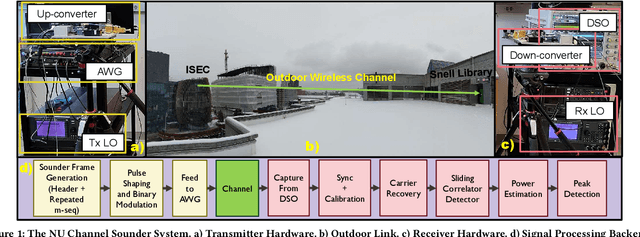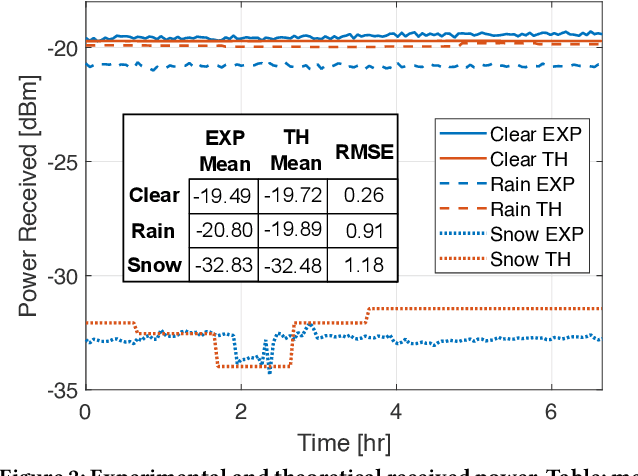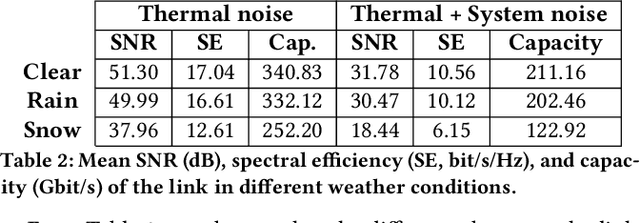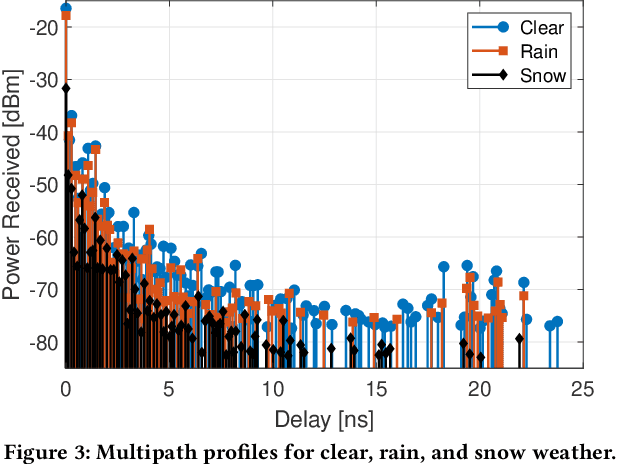Jacob Hall
Terahertz Communications Can Work in Rain and Snow: Impact of Adverse Weather Conditions on Channels at 140 GHz
Aug 29, 2022



Abstract:Next-generation wireless networks will leverage the spectrum above 100 GHz to enable ultra-high data rate communications over multi-GHz-wide bandwidths. The propagation environment at such high frequencies, however, introduces challenges throughout the whole protocol stack design, from physical layer signal processing to application design. Therefore, it is fundamental to develop a holistic understanding of the channel propagation and fading characteristics over realistic deployment scenarios and ultra-wide bands. In this paper, we conduct an extensive measurement campaign to evaluate the impact of weather conditions on a wireless link in the 130-150 GHz band through a channel sounding campaign with clear weather, rain, and snow in a typical urban backhaul scenario. We present a novel channel sounder design that captures signals with -82 dBm sensitivity and 20 GHz of bandwidth. We analyze link budget, capacity, as well as channel parameters such as the delay spread and the K-factor. Our experimental results indicate that in the considered context the adverse weather does not interrupt the link, but introduces some additional constraints (e.g., high delay spread and increase in path loss in snow conditions) that need to be accounted for in the design of reliable Sixth Generation (6G) communication links above 100 GHz.
 Add to Chrome
Add to Chrome Add to Firefox
Add to Firefox Add to Edge
Add to Edge